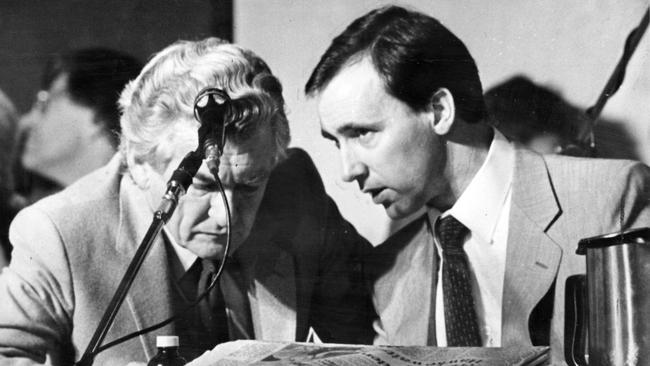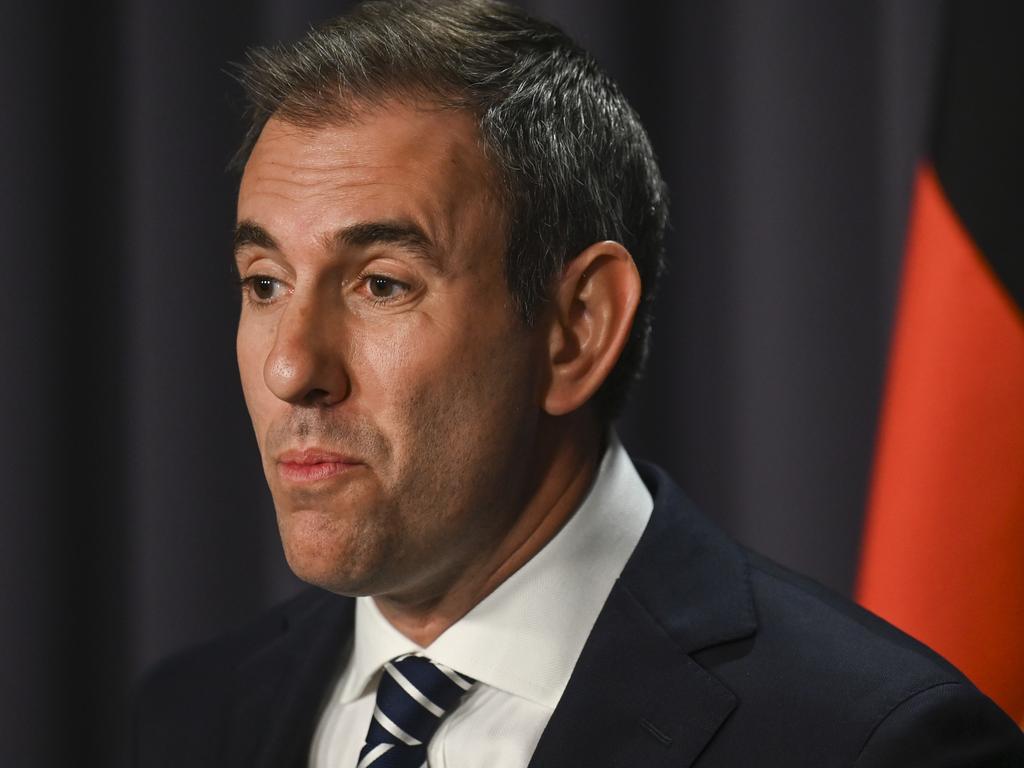Robert Gottliebsen: Superannuation changes a repeat of horror 1987 Labor, union fund


It proposed that the Hawke-Keating government of the day conscript 20 per cent of Australian superannuation income for a body to be set up to promote government-favoured projects and union agendas.
When former ACTU official and current Assistant Treasurer Stephen Jones last week stunned the superannuation community by claiming that members money was “honey” that should be managed in the best interest of the “hive” (i.e. the government hive) - no mention of returns - old timers, like me, went scrambling back to the records to confirm memories.
The superannuation community is currently being confused by the gymnastics that trigger higher taxes or bans on superannuation balances above $5m or $3m. But that is only part of base agenda which revolves around the ALP’s entrenched belief that superannuation is government rather than members’ money.
The ACTU and the Hawke/ Keating government combined in 1987 to set out an “Australia Reconstructed” strategy document that included the establishment of a “hive” called the National Development Fund to invest government money in enterprises in accordance with the agenda of the day.
The Albanese government has embraced a duplicate body called the National Reconstruction Fund (the word “development” has been replaced by “reconstruction”) to “support, diversify and transform the Australian industry and economy helping to create secure and well-paid jobs, securing future prosperity and driving economic growth”.
Behind that lofty ambition is a plan to invest across seven priority areas including renewable and low-emission technologies; medical science; transport; value added agriculture; forestry and fisheries; value added resources and defence capability.
The government has allocated $15bn for this enormous task. It is clearly not nearly enough to do the job properly. Where will the extra money come from? We go back to “Australia Reconstructed” for the likely answer.
Back in 1987 the ALP/ACTU proposed National Development Fund aimed to provide equity capital and “soft loans” to invest in industrial capacity. Priority would be given to investments in import replacement, export expansion, industry modernisation and reconstruction activities – an incredibly similar set of aims to the 2023 fund.


But added to the priorities was a set of extra criteria for enterprises to be eligible for funds including union approved dispute settlement procedures, work and management practices and other union agendas – for example, the recipients of the 1987 development fund money would be fully unionised.
To fund the proposed National Development Fund “all superannuation funds will be required to make available up to 20 per cent of their future income to be drawn on by the “National Development Fund”. Presumably that would include retail and self-managed funds.
At that time the Keating compulsory superannuation levies were still in the pipeline so total superannuation funds were much smaller than today. “Australia Reconstructed” proposed that if there was insufficient money there would be a one per cent tax on all imports supplemented by a surcharge on luxury imports.
The 1987 fund would be managed by the government’s Australian Industry Development Corporation (AIDC) which was established in 1971 by a Coalition government and by 1987 had a large portfolio of investments.
The 1987 National Development Fund/superannuation strategy was interrupted by a Wall Street crash, a recession and a government change. But had it proceeded then almost all the “conscripted” members’ superannuation money would have been lost given the massive $3bn plus losses that were later incurred in the AIDC “hive”.
Victoria’s ALP government tried a similar government investment strategy and the consequent mountain of losses that followed cost Victoria its State Bank which was snapped up by the Commonwealth Bank. Government sponsored bodies are not good at investment selection
Back to 2023 and the Albanese government will no doubt deny in strong terms that it has plans to conscript 20 per cent of Australians’ superannuation funds income for the “National Reconstruction Fund”
But in last year’s election campaign the government promised that there would be no changes to superannuation when we now know major changes were being plotted.
Government denials and statements on future superannuation policy therefore now have limited credibility.
One of the Industry Fund masterminds Garry Weaven bemoans that what’s happening under the Albanese government is “undermining the whole basis of super”.
Fascinatingly Jim Chalmers did a PHD on the Paul Keating era which included “Australia Reconstructed”. Accordingly Chalmers now appears to be defining superannuation in a way to make it easy for Australian superannuation members’ money to be the “honey” that can be conscripted for the government “hive” – the National Reconstruction Fund.
Chalmers is also proposing that his definition of superannuation include the word “retirement”. These days most people know that the best retirement asset is owning a dwelling. Superannuation is great but it is second.
Unlike Chalmers, the ALP/ ACTU designers of “Australia Reconstructed” also understood the importance of dwelling ownership in retirement and set out that the “National Development Fund”, should provide loans for houses preferably for first home buyers and low income earners.
The government will almost certainly ignore this part of the “Australia Reconstructed” master plan because its too close to Coalition policy.
Instead it looks like industry fund money will be sucked into social housing projects instead of helping new home buyers.
If the full 1987 Australia Reconstructed agenda (outside housing) is embraced there will be a 15 per cent of invested funds limit on how much superannuation funds can invest overseas.
The sad thing is that governments, and particularly Australian governments are not good at running these enterprise investment funds so if superannuation income is conscripted the outlook for superannuation in Australia is bleak.







The Albanese government’s confusing superannuation agenda is becoming clearer – they are in the process of introducing a 2023 version of the Australian Labor Party/Australian Council of Trade Unions’ 1987 superannuation blueprint - and that blueprint is horrific.